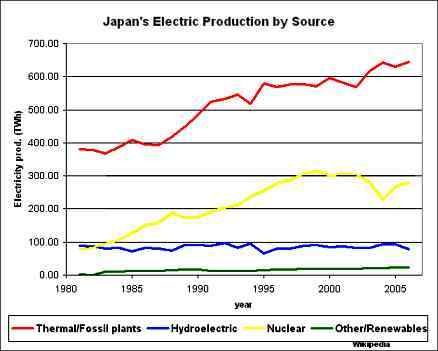California's two nuclear power plants are located on or near major fault lines. The Diablo Canyon facility is of particular concern. Californians have been anywhere from upset to outraged at the Diablo Canyon nuclear facility from the start. More than two million people get electricity from the plant. Designed to withstand a 7.5 magnitude earthquake, there are reasons to be less than confident in this estimate. The plant operator, PG&E, completely misinterpreted blueprints in the initial construction of "certain crucial pipe supports in the reactors containment room." The misinterpretation involved constructing the pipe supports in a "mirror image" of the intended design.
Diablo Canyon is just 2.5 miles from the Hosgri Fault, a major portion of the San Andreas Fault. Construction proceeded despite the discovery of this massive fault early on.
Recently, PG&E executives diminished the importance of the Shoreline Fault less than an mile offshore from the nuclear plant. This fault was discovered in 2008. The Santa Barbara Independent reported that, "Nuclear Regulatory Commission (NRC) officials and PG&E executives have insisted there's no cause for alarm; the plant, they maintain, is designed to withstand far more force than the new fault" will generate.
The Independent interviewed USGS Chief Scientist, Tom Brocher. He noted the possibility that the Shoreline Fault runs under Diablo Canyon's reactors is "speculative" but not ruled out. Brocher said, "You're bringing into the picture the possibility that an earthquake could crack the ground surface. This would be a disaster beyond anything we've seen in Japan:
"The prospect of such a calamity -- with two nuclear reactors operating above ground and pools of spent fuels so dangerous they have to be kept submerged in water at least five years before they can be moved to steel-reinforced concrete casks -- is the stuff of nightmarish disaster scenarios." Nick Welsh, Santa Barbara Independent.
Sitting Ducks
As meltdowns and nuclear disaster continue in Japan, we should anticipate the impact of similar disasters at one or several of those red dots from the interactive global map of nuclear facilities. Natural events, plant failures, and sabotage provide an array of scenarios that can cripple a region or entire nation.
The potential of nuclear catastrophes is dismissed by energy company sponsored and nuclear friendly government reports claiming probable nuclear plant safety in the face of well-documented risks. The nuclear firms and Japanese authorities vouched for the safety of Fukushima I. All of that was to no avail.
Nevertheless, the administration's proposed energy solution, the American Power Act, contains provisions for nuclear industry bailouts which are central to future energy needs. The industry largesse will help achieve the act's goal of a 60% increase in power from nuc
See interactive map at Internat by US Dept of Energy
See interactive map at International Nuclear Safety Center
Japanese Energy and Economic Disruption
Eighty percent of Japanese energy relies on imports. Nuclear plants provide about 30% of the electric production for the industrial base. The loss of the Fukushima I plant, for example reduces the nuclear output by 10%, just for starters. It also derails the big plans Japan has for nuclear power through 2050. Over 60% of domestic needs will be met by a robust nuclear program according to one optimistic estimate.
The following graph shows the contributions electrical production:
Assume a 20% loss of nuclear power production with the elimination of Fukushima's 10% contribution and other reactors that may go offline due to preemptive safety precautions. Japan faces a near term energy shortage. The loss of 20% of nuclear production, for example, could translate into a 6% percent reduction of overall electric production. Hydroelectric and renewables are not capable of rising to the occasion as replacements. That leaves thermal/fossil plants. More imports and more pollution will go hand in hand for the next few years. Japan will pay much more attention to the Middle East, the source of 90% crude oil imports, with less focus on planned spread of nuclear plants.
This is speculation. The situation may be much worse. One thing is certain. The government regulator's confidence that "we will resolve this" seems far-fetched at best.
Next Page 1 | 2 | 3 | 4 | 5 | 6
(Note: You can view every article as one long page if you sign up as an Advocate Member, or higher).






